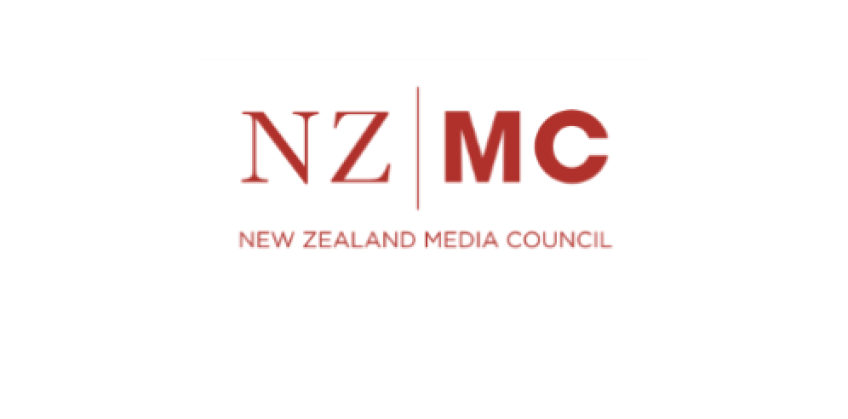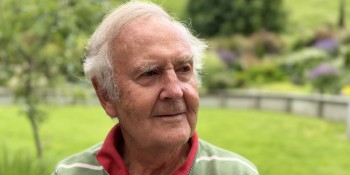Media Council Rulings re: Crux and QLDC / QAC

The following Media Council Rulings have been made in connection with complaints from the Queenstown Lakes District Council and the Queenstown Airport Corporation against Crux.
CASE NO: 2939
ADJUDICATION BY THE NEW ZEALAND MEDIA COUNCIL ON THE COMPLAINT OF QUEENSTOWN LAKES DISTRICT COUNCIL AGAINST CRUX
FINDING: UPHELD UNDER PRINCIPLES 1 (Accuracy and fairness), 4 (Comment and fact) AND 6.
NOT UPHELD UNDER PRINCIPLE 1 (Balance) and 12 (Corrections)
TO BE PUBLISHED ON OCTOBER 5, 2020. CONFIDENTIAL TO THE PARTIES UNTIL THAT DATE
Background
[1] The Queenstown Lakes District Council has complained about two articles on the Crux media website. The first was headlined ‘QLDC consultants: Council broke its own financial rules over ZQN7’ and ran on June 30, 2020. The second ran the next day, July 1, and was headlined ‘QLDC admits ZQN7 money was “outside the usual frameworks”.’ Both articles were written by Crux Managing Editor Peter Newport.
[2] The stories are part of ongoing reportage and analysis by Crux into spending by the district council. These stories focus on a consulting company called ZQN7, which Crux reports it chose at random from council accounts released under the Local Government Official Information and Meetings Act (LGOIMA).
[3] ZQN7 completed a series of bylaw reviews for the QLDC for which it was paid around $530,000 over a three year period. The consultancy is run by Ruth Stokes and Jendi Paterson, both former QLDC managers.
[4] ZQN7 was paid for six projects, including bylaw reviews required by law. For five of the six projects ZQN7 was selected via a process that permits managers to directly appoint suppliers for work costing less than $50,000. The six projects were broken down into stages. The QLDC says two of the projects had three stages, but does not break down the other projects, although the payments of under $50,000 were tied to each stage, not each project. Spending on stage two of what the council calls Project B and Project C exceeded the $50,000 limit. The Council says that “did meet financial delegated authority for the expenditure level”, however. One stage of one project was not directly appointed, but approved on the basis of a procurement plan. Crucially, the QLDC concedes that stage three of Project C “did not follow the appropriate procurement approach”.
[5] While the first story is angled around the procurement failure admitted by the QLDC, it also reports the bylaw reviews had not been budgeted for and the work was not tendered. It goes on to discuss the alleged role of QLDC’s Corporate Services head Meaghan Miller in the appointment of ZQN7 and criticisms of her work.
[6] The second story is based on a written statement by the QLDC sent hours after the publication of the first story. It answered questions asked by Newport eight days earlier, on June 23.
[7] This is the second complaint by the QLDC against Crux this year and at the same September meeting the Media Council is also in receipt of a complaint by the 75 percent council-owned Queenstown Airport Corporation (QAC). There is clearly a breakdown of trust and communication between the parties. While the Media Council will adjudicate on media standards in these complaints, it is wary of being drawn into a row that does not reflect well on either party.
Complaint
[8] The QLDC first complained directly to Crux on July 10, raising a series of points and asking for them to be corrected. Later that day Newport replied he had taken down the articles temporarily to make amendments. He asked a series of questions challenging the need for corrections. On July 14 Jack Barlow replied on behalf of the QLDC saying it had supplied all it could on the issues raised, it would not comment further and Crux’s failure to publish a correction or apology meant QLDC would complain to the Media Council. When Newport asked if that was a refusal to supply information under the LGOIMA, Barlow replied the matter was now with the council’s legal division for consideration.
[9] In bringing its complaint to the Media Council, QLDC says Crux has made “unbalanced and inaccurate statements”. It complains under four principles: Principle 1, Accuracy, Fairness and Balance; Principle 4, Comment and Fact; Principle 6 Headlines and Captions; and Principle 12, Corrections.
[10] QLDC complains that Crux says in a caption that “over half a million dollars was paid out without procurment (sic) rules being followed”. It says that is incorrect. “Only one of the five (sic) ZQN7 projects – the Speed Bylaw – did not follow the appropriate procurement approach”. (Principle 6, Headlines and Captions and Principle 1, Accuracy).
[11] The district council also complains that Crux has made repeated offensive and damaging allegations against its staff with no supporting evidence. Miller is mentioned in the first story as “the person who appears to have guided the process for the hiring of ZQN7”. There is no basis for this statement and it is incorrect, bordering on harassment, it says. Crux’s singling out of Miller seems to rest on a single email exchange in which she refers Stokes onto a colleague. “In the absence of facts, Crux has created an entirely fictional conspiratorial arrangement by using phrases such as ‘...how these dots might connect...’. This is misleading in the extreme”. (Principle 1, Accuracy and Fairness and Principle 4, Comment and Fact)
[12] QLDC also says the report misrepresents the nature of their workshops. Crux claims they are for “select councillors” and serve as a “way of limiting or rewarding various elected councillors – but with no paper trail”. Such workshops are standard practice in local government, QLDC says, and Crux offers no evidence of its claims. (Principle 1, Accuracy)
[13] Finally, also in the first article, Crux claims Miller told new councillors last year during induction sessions not to talk to media. QLDC denies this. To the contrary, councillors receive media training. Again, Crux provides no evidence. (Principle 1, Accuracy).
[14] Together, the two articles contain “extensive misrepresentations, misleading suggestions and factual inaccuracies”. While Crux has taken them down, that does not undo the fact they were published and read in the first place and have not been corrected since.
Editor’s Response
[15] In response to both the QLDC and QAC complaints, Crux Managing Editor Peter Newport says they are an abuse of process designed to damage Crux, rather than bona fide complaints.
[16] Crux says it has spent three years trying to establish the extent of QLDC’s expenditure on external consultants and reliance on former – rather than existing – staff. Its official requests for information have often been “blocked”.
[17] It says the disputed parts of the stories relied on information from the QLDC. The appointment of ZQN7 did not use an open tender process, there was no procurement plan to cover total expenditure and no budget for the work. The QLDC admitted to breaking its own procurement rules.
[18] Crux hasn’t “corrected” the stories because QLDC has not provided proof of a tender, has only provided one procurement plan, and has provided no evidence of delegated authority to make the appointment of ZQN7.
[19] As for the “damaging” allegations about Meaghan Miller, Crux says as she is GM of Corporate Services, “it is not unreasonable to assume she would be responsible for recruitment of consultants, as part of leading the HR department”. Emails show “an early exchange” between Miller and Stokes.
[20] Crux says the use of workshops to avoid public scrutiny has been criticised in national and local media throughout New Zealand, so they are not alone in making that observation. They provide examples of other critiques.
[21] Anonymous sources from within the district council have spoken of councillors being shoulder-tapped for workshops, selected by Miller or mayor Jim Boult.
[22] The claim that Miller told councillors not to speak with media comes from “at least two sources” present at the inductions. Only two councillors engage usefully with the media and they tend to be excluded from workshops.
[23] In terms of providing balance, Crux points out that it has published in full any written responses from QLDC in respect of this story. It says it’s happy to run corrections, but only if facts are supplied. QLDC’s response that something is fact “because we say so” is insufficient.
[24] Crux says it seeks an improved relationship and would like better access to council staff and a free flow of information. It raises concerns about the QLDC use of the LGOIMA, but those are issues for the ombudsman not the Media Council.
Discussion
[25] As noted in paragraph 7 the relationship between QLDC and Crux has obviously become hostile and the parties are talking past each other. We hope some goodwill can be found, but the job of the Media Council is merely to address this complaint.
[26] It’s fair to say that Newport employs an unusual style of reportage. We noted in our April ruling that it’s a type of advocacy journalism, but he needs to be careful in his blurring of the lines between fact and opinion and with his lack of attribution and proof. Advocacy journalism is not an excuse to break those tenets of journalism. Assertion is not fact and while any journalist can report assertions of a source, Newport in these news stories is the journalist, not the source. We would repeat the advice that there needs to be a distinction drawn between the facts and the reporter’s opinion, with clear labelling.
[27] It is problematic for any reportage to be littered with wording such as “a selection process that appears not to have taken place...” or “a final point on how these dots might connect...” or “[Miller] seems to play a crucial role in all QLDC activities...”. “Appears”, “might” and “seems” are not proven evidence. Neither are any of those criticisms attributed to sources; they instead express the opinion of the reporter.
[28] The first story, for example, implies serious financial mismanagement by QLDC. It claims QLDC staff split payments into payments of under $50,000 to avoid its own rules. Newport’s evidence for this is a single email asking for distinct invoices. QLDC offers an explanation for this in an email, saying ZQN7 was paid in stages because the projects were completed in stages, with the next stage dependent on the success of the previous one. Newport fails to report that explanation, instead claiming an attempt to break the rules without providing proof.
[29] He also claims QLDC broke its procurement rules by not putting the bylaw review projects to tender, writing “There was no tender or bid process that we can find”. The Media Council notes that an absence of evidence is not evidence. And while Crux supplies a table from the QLDC’s procurement rules in its Editor’s Response suggesting a tender is required even for work costing less than $50,000, that evidence is not in either story and is a thin foundation for a serious allegation.
[30] The QLDC, unhelpfully, is just as prone to confusing assertion with fact and the Media Council sympathises with Crux’s frustration at QLDC’s lack of transparency. It is not clear from their answers, for example, whether or not a tender process was expected in these cases.
[31] When Newport asks, crucially, why the appropriate procurement payment was not followed for Project C, the QLDC reply reads: “We are confident that on the whole the appropriate processes and decision-making gateways were followed, and sometimes those decisions will include a judgement that is outside of the usual frameworks”. That, frankly, is a meaningless sentence that offers ratepayers no clarity about a serious admission; that the QLDC failed to follow an “appropriate procurement approach”.
[32] In its complaint QLDC claims to have clarified that matter, but it clearly has not. If it wants more accurate reporting, it should provide more accurate answers. As we said with Crux, assertion is not fact. A correction requires clear evidence, as Newport has sought. Crux acted responsibly promptly taking down the stories and seeking clarification.
[33] From its complaint the QLDC seems to be under the impression it is a reporter’s job to simply print their answers to questions as fact. It is not. Journalism requires scepticism and when so little information is released Crux’s repeated questioning is entirely justified from any media seeking to hold public officials and expenditure to account. Indeed, Crux’s questioning and extensive use of the verbatim email exchanges means QLDC can hardly complain about a lack of balance.
[34] However, Crux’s caption that “over half a million dollars was paid out without procurment (sic) rules being followed” over-reaches. Procurement rules were broken and $530,000 was paid out, but only one of the six payments – it is notable that for all the questioning, we still do not know the amount of that mishandled payment – broke the rules. The caption wording makes the failure sound larger than it was.
[35] Further, as a caption it does not accurately reflect what is reported. In the article Crux makes it clear that QLDC did not follow the proper approach only in relation to one stage of the Speed bylaw review. The caption misrepresents that fact.
[36] Finally on the procurement rules, Crux says in the first article that the payments of under $50,000 “look like a mechanism to stay under the $50,000 direct appointment rule, avoiding the council’s own procurement policies”. It does not include the QLDC’s explanation that the payments were paid in stages because each one was conditional on the previous stage being successfully completed. This could be seen as a lack of balance, but given Crux has been repeatedly and clearly asking for more a more detailed explanation of these payments and QLDC chose not to explain them in any depth despite being given every opportunity to do so, we cannot find against Crux on balance. Rather, we deal with our concerns around this issue under Principle 4, where we see fact and comment unhelpfully mingled.
[37] On the claims about Meaghan Miller, Crux says in its response to the Media Council that some of the criticism in the first story is based on council sources. While it’s legitimate to rely on anonymous sources, in the story Crux makes claims without any explanation of where they come from. They are assertions Newport makes as a reporter without attribution, anonymous or otherwise, and muddy the lines between facts and comment.
[38] Crux writes Miller “appears to have guided the process for the hiring of ZQN7” without proof. The email exchange shows a connection, but no evidence of guidance. Indeed, the company is directly hired by council manager Myles Lind.
[39] While the claims about the workshops and Miller’s words about the media at induction sessions are disputed by QLDC, they are a matter of he says/she says. Crux claims to have sources and QLDC provides no proof sufficient to warrant a correction. They are certainly issues worthy of reporting in the public interest.
Decision
[40] Reportage into local government is a vital part of a functioning democracy and Crux is attempting to play an important role and ask challenging questions in what is clearly a difficult environment. Many of the undisputed facts in the stories, from the use of un-tendered hiring of former council employees and friends, to the QLDC not adhering to its own procurement approach are stories of significant public interest.
[41] However in other parts of these stories Crux has over-reached and failed to uphold standards expected under Media Council principles.
[42] The complaints around balance under Principle 1 and regarding the lack of corrections under Principle 12 are not upheld.
[43] The complaint on the accuracy of the “half a million dollars” caption under Principle 1 and Principle 6; the complaint regarding the fairness of the criticism of Meaghan Miller’s “guidance” under Principle 1; and the complaint about the blending of comment and fact regarding Principle 4 are all upheld.
Media Council members considering the complaint were Hon Raynor Asher, Rosemary Barraclough, Liz Brown, Craig Cooper, Jo Cribb, Ben France-Hudson, Jonathan MacKenzie, Hank Schouten, Marie Shroff, Christina Tay and Tim Watkin.
CASE NO: 2940
NEW ZEALAND MEDIA COUNCIL ADJUDICATION ON THE COMPLAINT OF QUEENSTOWN AIRPORT CORPORATION AGAINST CRUX
FINDING: Upheld under Principle 1, Accuracy fairness and balance, under Principle 4 Comment and fact and under Principle 6 Headlines and captions
TO BE PUBLISHED ON OCTOBER 5, 2020. CONFIDENTIAL TO THE PARTIES UNTIL THAT DATE.
Overview
1. Queenstown Airport Corporation (QAC) complained about a series of articles in the local news website Crux about the potential difficulties in financing the cost of paying for land taken under the Public Works Act to provide for airport expansion.
2. The 15.4ha Lot 6 was vested in QAC in late 2019 with the price subject to yet-to-be completed negotiations with its former owner, Remarkables Park Ltd.
3. QAC, a council-controlled trading organisation that operates independently from the Queenstown Lakes District Council, has been hit this year by the Covid-19 pandemic which has severely restrained passenger numbers and stopped international flights.
4. Crux has taken a close interest in issues relating to the airport. It regards QAC’s administration, finances and plans as being of significant public interest.
5. At the same time QAC has been cautious about disclosing information. Its annual report, released in late August (after this complaint was filed) states that Covid 19 will have a material impact on future trading. The report said it “has required a restructure of the business, a suspension of the capital programme and renegotiating bank facilities and covenants out to 31 December 2021.” The report notes it was offering $18.4 million for Lot 6. This figure had not previously been publicly disclosed and is far lower than the $116-$263 million estimates reported by Crux.
6. Crux has written extensively about the controversial land acquisition and four articles are cited in this complaint.
The Complaint
7. QAC general manager corporate and community affairs, Sara Irvine, complained Crux had breached Media Council Principles 1 (accuracy, fairness and balance)’ 4 (comment and fact), 6 (headlines and captions), and 12 (corrections).
8. She said Crux did not contact QAC for information or comment before publishing an editorial written by Peter Newport on May 2, 2020 headed Into the Danger Zone – is something Very Bad about to happen with our airports? She said the central contention of the article is that there is a serious risk of the Queenstown Lakes District Council’s majority ownership (75.01%) of QAC being diluted by a share sale and that the asset is at risk of being stolen from ratepayers.
9.In the editorial Crux asserts that QAC could instigate a share sale which it cannot – a fact stated by a QLDC councillor at a full council meeting attended by Mr Newport (via video-conference) one week prior to the publication of the editorial.
10. On June 19 Crux published an article headed Airport risks bank limits over redundant $200 million land purchases and on July 7 it ran another article headed Will the Bank of China need to rescue Queenstown Airport’s debts? Both articles were presented as straight news, not opinion. In the articles Mr Newport maintains the unsupported claim that QAC’s solvency as a business is at risk and QLDC’s majority ownership of QAC is at risk. This is factually incorrect and does not accurately reflect the information Crux has been provided by three sources: QAC, QLDC and minority shareholder Auckland International Airport Ltd.
11. The June 19 article was wrong in stating the acquisition of the land was redundant and not required. Mr Newport was advised of this in a news release sent out on October 25, in an email exchange on January 23 (where he was resent the release) and by a statement to a public council meeting by QAC’s acting chair on April 23.
12. In his editorial on May 2 Mr Newport said the Queenstown Airport land in Frankton is valued at $1.2 billion by some estimates. Yet in the June 19 article he quotes QAC’s accounts which valued its total assets (including Wanaka) at $365 million.
13. Mr Newport claimed on June 19 that Crux had contacted QAC acting chair Mrs Adrienne Young- Cooper to obtain her perspective on the Lot 6 situation but no such approach was made until June 23, after publication of the article.
14. On June 17 he asked for the acting chair’s contact details but did not request an interview or send any questions for her consideration. Mr Newport was provided contact information which was publicly available on the QAC website. He published his June 19 article without sending any correspondence to the email address provided for the board of directors.
15. On June 23 Mr Newport emailed QAC with additional questions and put forward the view that QAC was technically insolvent. In that email exchange he requested an interview (for the first time) with the acting chair.
16. An Official Information Act response was provided on June 26 and Mr Newport was asked what topics he wished to cover in an interview with the acting chair. To date there had been no response to that email.
17. On July 6 Mr Newport wrote to QLDC and Auckland International Airport Ltd stating falsely that QAC was not answering questions “on this issue” and that QAC told Crux on June 26 that the purchase of Lot 6 was budgeted for but did not provide any detail to further questions and no public records exist to back up that claim.
18. On July 7 Mr Newport published an article which begins “The question as to the source of cash for the QAC’s purchase of Lot 6 remains a mystery.” In this article he repeats claims made in the June 19 article and introduces the unsubstantiated claim of insolvency. Mr Newport also wrote that QAC will only say that the amount is budgeted for without releasing any further detail – this is untrue and misleading.
19. The value attributed to the land is the guesswork of the writer, not substantiated or supported by a professional valuation and is greatly inflated. He has also provided wildly inconsistent values for QAC’s land and assets at Frankton between the two articles, seemingly cherry-picked to support his argument of the day.
20. QAC’s finances were not at risk. Funding requirements were covered by bank facilities and Mr Newport was advised of this in some detail on June 26. Suggesting otherwise unduly threatens the reputation of a vital community asset. It also appears to have negatively impacted community confidence in the company in some quarters.
21. In both articles and in email correspondence it is evident Mr Newport is unwilling to deviate from his opinion regarding the value of Lot 6, make any corrections or acknowledge he has been provided with a significantly more detailed response than he claimed.
22. Crux has misrepresented opinion as material facts and has reported without accuracy, fairness and balance, which has precluded readers from exercising informed judgement, and to the detriment of the reputation of QAC, its directors, management and staff.
23. These articles blur the line between comment and fact. Examples of opinion presented as material facts include:
“QAC now needs to fund up to $263 million to finance the purchase, even though the land is no longer needed.”
“Such a purchase will exceed the airport’s current $140 million borrowing limits and put it in breach of current banking facilities.”
“There is now a real risk the airport will have to sell shares to finance the land purchase, a move that could see the airport disappear from majority QLDC ratepayer ownership. Even the sale of shares could be difficult or non-viable post Covid-19.”
“The current debt facility for QAC is shared between a number of local NZ/Australian banks along with the Bank of China. If the local banks don’t have an appetite for further loans to QAC, especially with international air traffic at a near-complete standstill, then it may be the Bank of China to the rescue.”
“The QAC official website is published in only two languages – English and Chinese – and it maybe that the Bank of China sees commercial or strategic merit in offering up further cash to finance Queenstown Airport expansion land that may, or may not, be needed for actual future aviation purposes.”
24. QAC also complained about two captions which it says were neither accurate nor fair. One picture was captioned Acting QAC chair Adrienne Young-Cooper – not responding to questions about Lot 6
and the other stated Queenstown Airport’s comms person Sara Irvine – will only say that the Lot 6 purchase is budgeted for.
25. It also complained Mr Newport was unwilling to promptly correct significant errors published on June 19 and had republished and extended unsubstantiated claims on July 7.
26. In December 2019 Mr Newport had published a personal forecast in which he said the airport’s chief executive would be persuaded to vacate his post after more revelations around poor handling of community relationship emerge. This went to the publication’s “agenda” that appears to have played out in the articles and might explain his refusal to make corrections.
27. The articles raised community concern and anxiety regarding a valued community-owned asset. People who commented on the articles accepted them as fact-based news and reacted accordingly. No corrections or clarifications were made despite detailed information to refute the claims being provided on June 26. Further on July 7 Mr Newport repeated the claims and upped the ante by introducing new theories designed to legitimise contentions made in his May 2 opinion piece that the asset was at risk.
Response
28. Responding to the complaint that it had not contacted QAC for comment before publishing its editorial on May 2, Crux said it had been asking for this information since January. It was not supplied. As to the possibility of a share sale, this could be the case as ratepayers were unlikely to agree to provide many millions of dollars to “rescue” the airport. The latest pre-Covid accounts for QAC showed only around $1 million in cash and $70 million of debt. There were news reports of other airports selling shares or being rescued with cash from local councils.
29. As to QAC’s statement that Lot 6 is not redundant, Crux said QAC’s media release (in which it said it was taking the land under the Public Works Act) offered no evidence or reasoning as to the need for Lot 6. It also failed to address community and QLDC opposition to further airport expansion. Lot 6 was only required for theoretical large-scale future expansion – not for current or even post-Covid forecast needs.
30. As to differences in land value estimates Crux cited local architects and other expert sources as having valued all the airport land at between $1.2 and $1.6 billion. It assumed the QAC figure of $365 million was unrealistic and a deliberate undervaluation in an attempt to reduce commercial rates paid to QLDC.
31. Crux had been asking for details of the purchase since January. In the absence of any details from QAC “we are forced to use our own calculations which are clearly detailed in our story.” If QAC wanted to identify factual errors, it was happy to make a correction. The purchase also had to be seen in the context of the airport’s current trading position and the post-Covid collapse of air traffic.
32. As to why Mr Newport asked for the acting chair’s contact details on June 17, but did not request an interview or send questions, Crux said emails showed its questions were clear as were its attempts to contact her. Equally clear were its concerns over QAC’s lack of transparency or access to public information. There was a history of information being blocked with no good reason. There was no response to one email in which Crux asked for an interview and outlined indicative questions and Ms
Irvine had been provocatively disingenuous in pretending to supply the acting chair’s contact details – one was the airport’s postal address and the other was a QAC admin email that went straight through to the PR and Comms team.
33. A letter received in response to a list of questions submitted on July 1 contained no new information and a subsequent request for comment was answered by repeating the content of an October 2019 press release and a repetition of sparse facts from a previously published statement of intent.
34. Responding to the complaint that it had repeated an unsubstantiated claim of insolvency Crux said QAC public accounts did not show sufficient funding to cover the purchase of Lot 6 and unlike other airports QAC had not provided any detail of their post-Covid trading position. Any reasonable person or ratepayer would be concerned at the state of QAC’s finances and even more concerned that the financial situation would be used to “re-engineer” the share structure to remove local majority shareholder control.
35. As to the complaint that the land valuation was guesswork and cherry picked, Crux said its methodology was clearly stated in its story and it was up to QAC to challenge that with their own facts or valuation range. QAC had failed to address why it had not paid for Lot 6 nine months after taking possession. A simple explanation, in the absence of any factual rebuttal from QAC, is that they cannot afford it or are trying to get out of the purchase.
36. As to claims that no corrections had been made, QAC did not answer questions, and made no further statement when repeatedly ask for more, or any, detail. There was no evidence in the email correspondence from QAC or QLDC providing any information that could reasonably be regarded as the basis for a correction.
37. Any goodwill that could have been created by some limited cooperation, background briefing or partial release of facts simply did not take place and was not offered by QAC at any stage.
38. Attempting to blame Crux for what has clearly been a disastrous, expensive and failed attempt to “sell” airport growth and the attendant mass tourism to Queenstown and Wanaka is both unfair to Crux and damaging to its own reputation
39. QAC, in close coordination with QLDC, has attempted by gathering the local PR community into a “wolf pack” to attack Crux and organising this coordinated Media Council complaint with QLDC’s companion complaint, is a blatant attempt to shoot the messenger.
40. Crux makes a number of other points about the dire state of journalism in New Zealand, says it is the only local media platform that holds power to account in the Southern Lakes and that it is under attack for its journalism, not for its refusal to publish corrections.
41. It apologised for the tone of its emails which failed on occasions to hide its considerable frustration at the culture of total secrecy that had grown up around the QAC and QLDC. It also urged the two bodies to embrace transparency.
Further correspondence
42. QAC in the final comment noted that independent professional valuers are engaged to value QAC’s assets every year and its accounts are audited every year. The information is publicly available.
43. They also noted that the email address supplied for the Acting- Chair went to the executive assistant to the CEO, who was responsible for correspondence with the board of directors.
44. There was no orchestration of complaints with QLDC. The timing of the QAC complaint was to comply with Media Council time limit requirements.
45. One further point raised in QAC’s reply to Crux’s rebuttals is that is has no record of two emails Mr Newport cited in his defence – dated July 1 and July 13. This was confirmed by an independent IT company. As far as the complaint goes little turns on this as nearly all the published material being considered in this complaint pre-dates those emails. Other points raised also do not clarify or advance matters further.
Discussion and decision
46. QAC has made a wide-ranging complaint that Crux’s stories over several months did not adhere to standards of ethical journalism and breached Media Council principles.
47. In presenting its case QAC has put forward a long and detailed list of matters to back its arguments and Crux has also advanced a very detailed response. A feature of this complaint is repeated reference to various emails, two of which (July 1 and July 13 from Crux) QAC says it never received. The Crux emails are notable for their tone, the way they dismiss Ms Irvine’s answers, and aggressive follow up questions which leave no doubt what he was thinking. Ms Irvine was affronted by Mr Newport’s approach. The Media Council notes it is not unknown for journalists to clash with and get angry with public relations professionals who they think are being obstructive. These emails are indicative of a clearly dysfunctional relationship and give a glimpse of what sometimes goes on behind the scenes in journalism.
48. But in considering this complaint, the emails and much of the argument that flows from them, have to be considered as secondary to the main issues. The Media Council’s purpose and scope is to consider published material and it will therefore focus on the four website articles mentioned by QAC which were published by Crux on April 23, May 2, June 19 and July 7.
49. The April 23 article headlined Councillors vote to accept airport Statement of Intent appears to be a straight forward report of a QLDC meeting which voted to accept an airport Statement of Intent. QAC said this was one of three articles where there was an absence of material facts and substance but it did not set out how it considered this particular article was flawed.
50. The May 2 article is labelled as an editorial. It was headlined Into the Danger Zone – is something Very Bad about to happen with our airports? The headline captures the flavour of the article in which Mr Newport surveys the predicament faced by QAC at a time when “commercial aviation is pretty much screwed.” He also said that in his view QAC’s chief executive is overpaid and the company is $70 million in debt and about to spend the same again or more to buy Lot 6, which could force the QAC to sell shares and change its share structure.
51. As an editorial this is clearly the editor’s opinion. It was based in part on information in previous articles published by Crux, information from Mr Newport’s own inquiries and responses to his requests for information from the QAC over the previous months. As such the opinions expressed had a foundation of fact. While some of Mr Newport’s assertions are contested they are not demonstrably wrong. As it has not been proven that material facts (on which the opinions expressed in the editorial were based) were inaccurate the Media Council finds there was no breach of its principles relating to comment and opinion.
52. The June 19 article was headlined Airport risks bank limits over redundant $200 million land purchase. It reports that the airport needs to find up to $263 million to pay for Lot 6 land, even though the land was no longer needed. Such a purchase would exceed the airport’s current $140 million borrowing limits. The price estimate was based on information from sources close to the former land owner that he expected a price linked to other recent sales in the Remarkables Park development where land had sold for $750-$1700 per square metre.
53. While QAC asserts the information contained in this story is wrong it did not take the opportunity to respond to Mr Newton’s questions or provide him with its own information which may have allayed his concerns about its finances. Crucially it merely repeated information previously supplied which gave no estimate as to what it expected to pay for the land to counter Crux’s figures. However it was not beyond Crux to establish from another reliable source, such as an independent valuer, what the cost might be.
54. The suggestion that Lot 6 is no longer required also remains a matter of contention but a problem we have in dealing with this whole complaint is that both parties hold assertions to be fact. Journalists are expected to back up assertions with supporting information or informed comment. QAC says the land is needed for future airport development and that was why it was taken. While development is now on hold because of the impact of Covid-19, it may still be needed in the future. But Crux has asserted, without any substantiation, that the land is no longer needed. That could ultimately be the case but the headline goes further by describing it as a “redundant $200m land purchase.” Its redundancy is not a fact and nor is the $200m price stated in the headline, which is inconsistent with the line in the story which cites sources to say the land may cost $116-$263 million. Because of its unsupported contentions that the land is no longer needed or redundant Crux is in breach of Media Council Principle 1 (accuracy, fairness and balance) and Principle 6 (headlines and captions).
55. The article also said Crux approached QAC’s acting chair, Adrienne Young-Cooper, for comment but received no response. The story was accompanied by a photo of Mrs Young-Cooper captioned “Acting QAC chair Adrienne Young-Cooper – not responding to questions about Lot 6.”
56. Emails show the journalist attempted to contact Mrs Young-Cooper through the media advisor for another company she was involved with. It is not known what he asked but he was advised, a day before the article was published that his details would be forwarded and that he would hopefully hear from Ms Young-Cooper soon. The first email from Crux outlining questions for the Chair was dated July 1. On the basis of this information the Media Council found it was inaccurate and unfair for Crux to state on June 19 that she was “not responding to questions about Lot 6” and this was a breach of Principles 1 and 6.
57. The article also stated, without supporting information, that there was a real risk the airport would have to sell shares to finance the land purchase. The journalist sent an email to QAC four days earlier about how the purchase would be financed – by lending or sale of shares. QAC’s response was unhelpful but the journalist’s statement that the airport may have to sell shares was speculation. This was a breach of Principle 4 (comment and fact) which states a clear distinction should be drawn between factual information and comment or opinion. An article that is essentially comment or opinion should be clearly presented as such and material facts on which an opinion is based should be accurate.
58. The final article cited in this complaint was published on July 7 under the headline Will the Bank of China need to rescue Queenstown airport’s deal. This article again refers to the problems QAC could face in financing the Lot 6 land purchase (this time estimating it could be as much as $200 million). It stated QAC did not have the money and asked QAC and its two shareholders (Auckland Airport and QLDC) how the purchase might be funded. It also asked the council chief executive Mike Theelan whether QAC was trading while insolvent. The article reported Mr Theelan’s statement that QAC was continuing to work on the “appropriate compensation for the land, which had been budgeted for and funded through its existing bank facilities”. He said the purchase had not caused QAC to become insolvent.
59. The article repeats the statement that a sale of shares could see local ratepayers lose majority control of the airport. While this is true, the article did not report comment made in a letter from QAC on June 26 that no share sale was proposed and that such a sale would require a shareholder resolution. This was in breach of the requirement for balance as detailed in Media Council principle 1.
60. The article went on to note that only an official audit would confirm questions around insolvency. It acknowledges Crux may be misreading official accounts but in the absence of facts “all we can do is report on what we can see.” It then suggests the Bank of China, with which QAC has a $30 million loan facility may come to the rescue if other banks with loan facilities do not offer further loans to QAC.
61. This article advances information of public interest about QAC’s situation and again demonstrated Crux’s efforts to find out important information about its finances. However, it was speculative, and not a factual report. Like the earlier article, there was a breach of Principle 4 (Comment and fact)
62. Much of the argument raised in this complaint revolves around the yet-to-be settled price of Lot 6, the piece of land taken for future airport expansion. There appear to be two vastly different assessments of what the land is worth and assertions that flow from those conflicting valuations can only be regarded as opinions rather than facts. The only figures Crux had when these stories were published were estimates based on comparable land sales provided by sources close to the former owner (i.e. $116 million to $263 million) while QAC was holding to a line that it would pay a much lower but unspecified sum which had been budgeted for and would be funded through existing bank facilities. It has only subsequently been revealed in QAC’s annual report that it is offering $18.4 million. There is a wide gulf between those figures - the price is still to be negotiated or perhaps decided by a valuation tribunal. We note that this process, under the Public Works Act, could take more than two years.
63. Other issues raised in this complaint have been considered and found to be relatively inconsequential and there is no point in canvassing all the arguments here.
64. However, the Media Council is concerned there has been a serious breakdown in what should be a straight forward professional relationship between the editor of a news organisation and the communications/public relations manager of a council controlled local company. QAC operates a business that has a crucial role in Queenstown’s economy and its affairs are matter of significant public interest.
65. The Media Council holds that an independent press plays a vital role in a democracy. It would seem Crux has a commitment to fulfil that role in its community but in doing so it needs to apply the standards of ethical journalism. It also seems that key figures in two of Queenstown’s largest organisations – the QLDC and QAC – take exception to Crux’s questioning of their operations. Public bodies have a duty to provide information.
66. This complaint and other recent complaints filed by QLDC with the Media Council show a relationship of festering mutual suspicion and growing antagonism marked by stonewalling and hostile email exchanges that just aggravate relations further.
67. We note that in response to this complaint Crux has apologised for the tone of its emails. Result
68. As noted above the Media Council upholds -
Three complaints under Principle 1 (accuracy, fairness and balance)
Two complaints under Principle 4 (comment and fact) and
Two complaints under Principle 6 (headlines and captions)
Media Council members considering the complaint were Liz Brown, Craig Cooper, Jo Cribb, Ben France-Hudson, Jonathan MacKenzie, Hank Schouten, Marie Shroff, Christina Tay and Tim Watkin.
Hon Raynor Asher took no part in the consideration of this complaint. Rosemary Barraclough stood down to maintain the public member majority.

























